Slope (Gradient) of a Straight Line
The Slope (also called Gradient) of a straight line shows how steep a straight line is.
Calculate
To calculate the Slope:
Divide the change in height by the change in horizontal distance
| Slope = Change in YChange in X |  |
Have a play (drag the points):
slope = 36 = 0.5
© 2018 MathsIsFun.com v0.891
Examples:
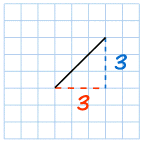 | The Slope of this line = 33 = 1 So the Slope is equal to 1 |
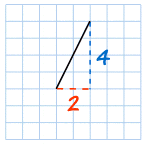 | The Slope of this line = 42 = 2 | |
| The line is steeper, and so the Slope is larger. | ||
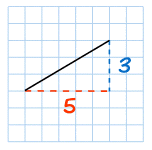 | The Slope of this line = 35 = 0.6 | |
| The line is less steep, and so the Slope is smaller. | ||
Positive or Negative?
Going from left-to-right, the cyclist has to Push on a Positive Slope:



When measuring the line:
- Starting from the left and going across to the right is positive
(but going across to the left is negative). - Up is positive, and down is negative
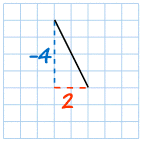 | Slope = −42 = −2 |
That line goes down as you move along, so it has a negative Slope.
Straight Across
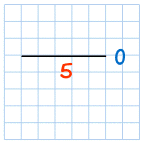 | Slope = 05 = 0 |
A line that goes straight across (Horizontal) has a Slope of zero.
Straight Up and Down
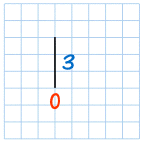 | Slope = 30 = undefined |
That last one is a bit tricky ... you can't divide by zero,
so a "straight up and down" (vertical) line's Slope is "undefined".
so a "straight up and down" (vertical) line's Slope is "undefined".
Rise and Run
Sometimes the horizontal change is called "run", and the vertical change is called "rise" or "fall":

They are just different words, none of the calculations change.
No comments:
Post a Comment